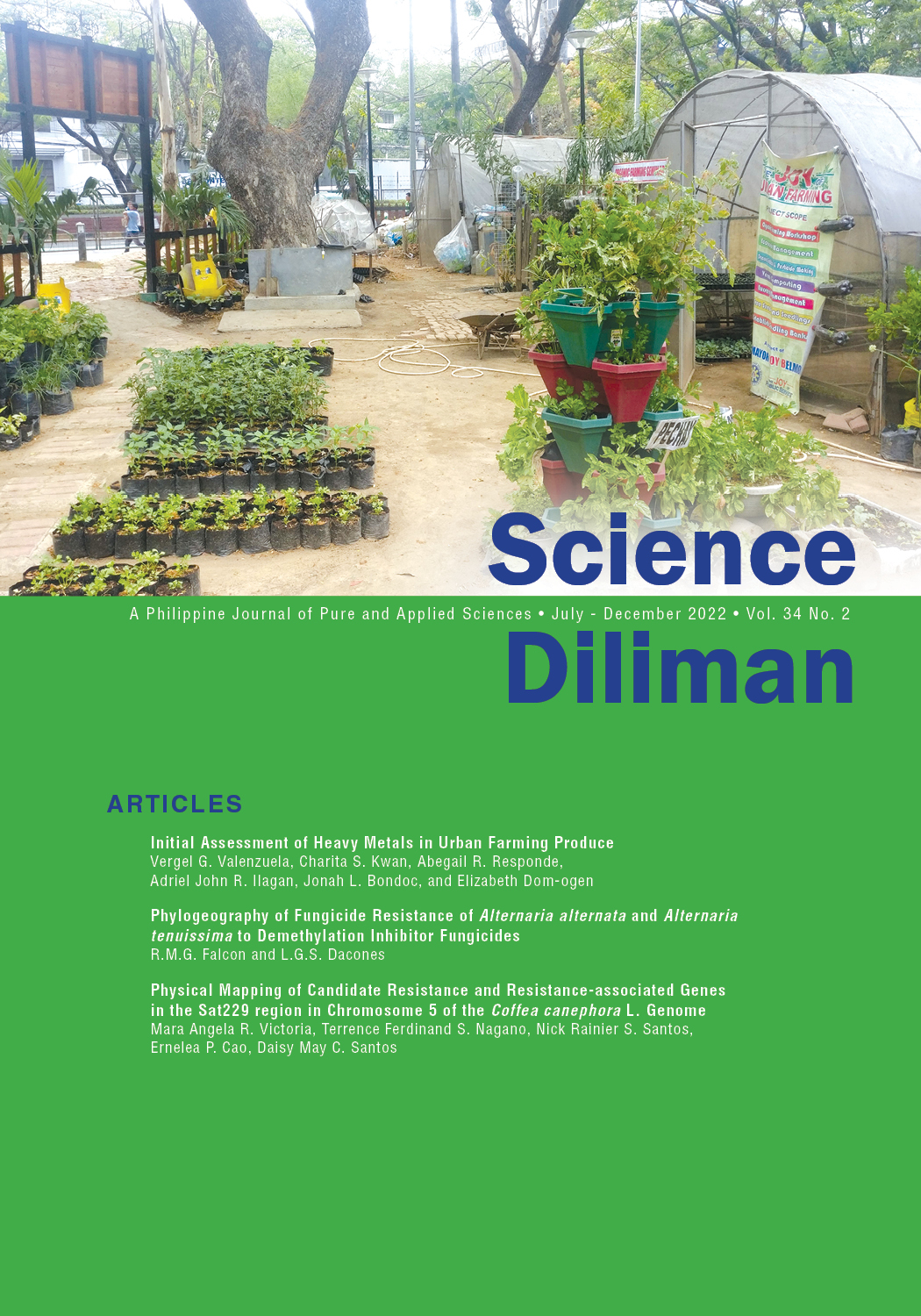Physical Mapping of Candidate Resistance and Resistance-associated Genes in the Sat229 region in Chromosome 5 of the Coffea canephora L. Genome
Abstract
Diseases and pests hamper Philippine coffee production. Identification of defense-associated genes, which are present in certain plants, can be used to identify which resistant coffee cultivars to propagate. This study aimed to identify Coffea canephora candidate resistance (R) and resistance-associated genes within a region (19-23 Mb) of chromosome 5, encompassing the Sat229 SSR marker. After using “BioMart” to retrieve data from Ensembl Plants, genes were screened based on their Gene Ontology (GO) annotations. Their predicted protein products were identified using BLASTp. For R genes, architecture was further evaluated using hmm scan, PCoils, and LRR search while clustering was analyzed manually. The genes were mapped using the R package “chromoMap”. The results reveal 23 putative R genes that encode NLR proteins detecting pathogenic effectors, and 52 resistance-associated genes. Notable ones were predicted to encode an isoform of diacylglycerol kinase 5 (DGK5), programmed cell death-associated proteins, transcription factors containing AP2/ERF domain, two potential novel proteins with C-terminal leucine-rich repeat (LRR) domains involved in defense against fungi, and isoprene synthase. Thus, this study was able to screen the Sat229 region of chromosome 5 of the C. canephora genome and identify candidate defense-associated gene loci, which can be used as reference for marker-assisted breeding programs.



